

- Call 908 543 4390
- Email
- Dr.Joni Redlich PT,DPT


Hi all! We know June for being the last month of school and the month where summer fun begins, BUT did you know June is also Scoliosis Awareness Month? Yes! June is the month where we highlight Scoliosis, a diagnosis that affects so many kiddos (and adultos☺️) across the world. So, for Scoliosis Awareness Month, we wanted to bring you all some information about Scoliosis, what it is, and how Physical Therapy can help!
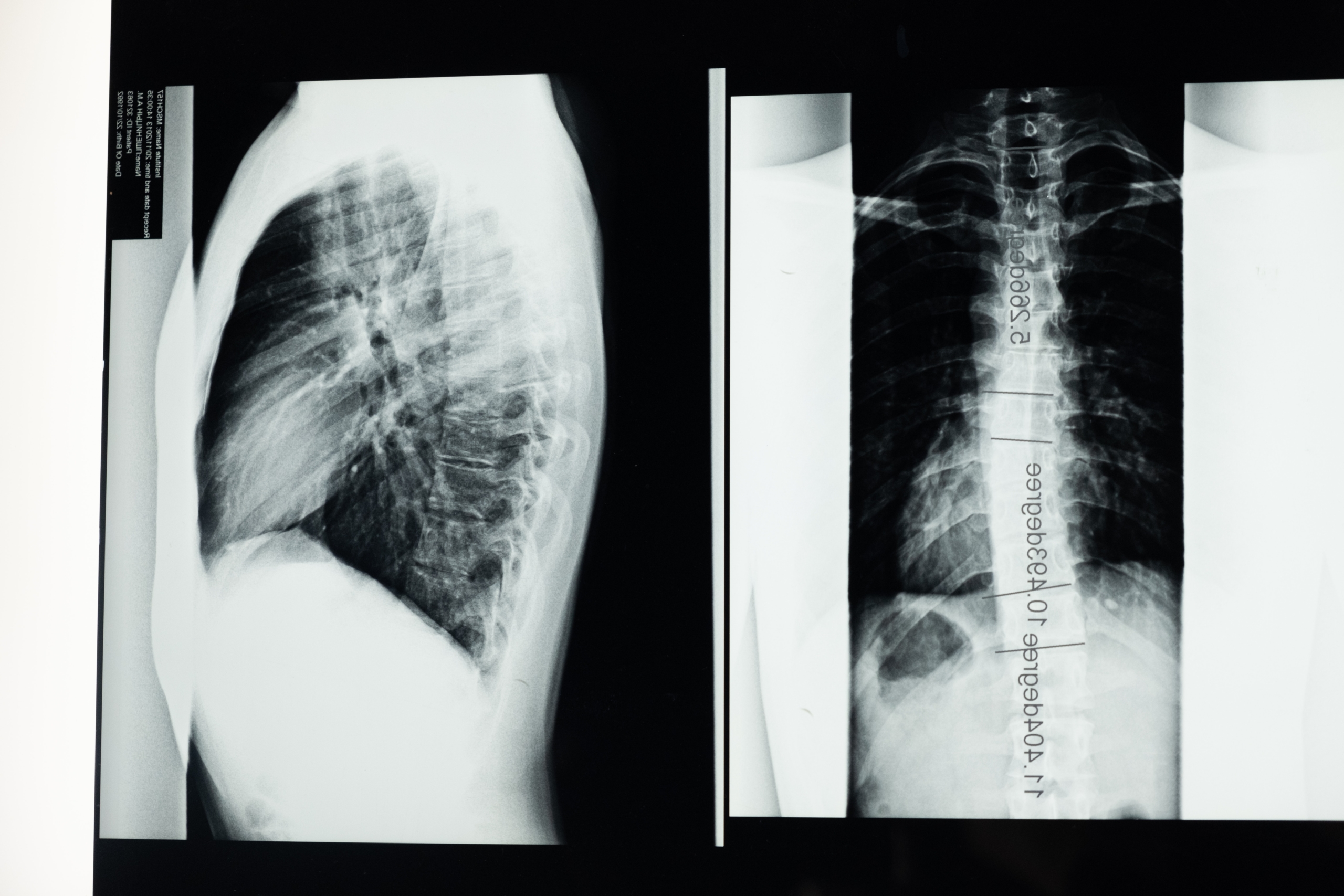 Scoliosis is a diagnosis that involves a curvature of the spine, the bones that run along the middle of your back. If a child is affected with scoliosis, as they grow, their spine will begin to curve in either the cervical, thoracic, or lumbar spinal regions, aka the neck, upper back and lower back regions. Changes in the spine’s natural anatomy create imbalances in the body that may cause your child’s shoulders, shoulder blades, hips, or ribs to look unlevel or uneven. It may also cause their spine to appear curved when bending forward, may affect their overall mobility, and may create back pain later in life if left untreated. If a child’s scoliosis is very severe, it can also affect the shape and growth of their internal organs, like the lungs or the heart.
Scoliosis is a diagnosis that involves a curvature of the spine, the bones that run along the middle of your back. If a child is affected with scoliosis, as they grow, their spine will begin to curve in either the cervical, thoracic, or lumbar spinal regions, aka the neck, upper back and lower back regions. Changes in the spine’s natural anatomy create imbalances in the body that may cause your child’s shoulders, shoulder blades, hips, or ribs to look unlevel or uneven. It may also cause their spine to appear curved when bending forward, may affect their overall mobility, and may create back pain later in life if left untreated. If a child’s scoliosis is very severe, it can also affect the shape and growth of their internal organs, like the lungs or the heart.
There are four different types of scoliosis: idiopathic, neuromuscular, congenital and degenerative. Degenerative scoliosis is often diagnosed above the age of 65 due to normal wear and tear on the spine and surrounding joints. Congenital scoliosis occurs as a result of spinal or rib deformities present at birth. Neuromuscular scoliosis can occur when a child has a neuromuscular condition, like cerebral palsy or muscular dystrophy. With Neuromuscular scoliosis, as the child grows, their muscles pull on their bones as they move and continue to participate in developmentally appropriate activities. When a child has a neuromuscular condition, they might not be moving with similar movement patterns or frequency to a child that is developing typically. This means that their muscles are not pulling the same way on their bones as a typically developing child’s muscles are, and this can cause their bones to grow abnormally, creating a potential for scoliosis.
Adolescent Idiopathic Scoliosis is the most common form. It can be a confusing diagnosis for families to receive because it is often unknown as to why the spinal scoliosis is occurring in the first place. Medically, doctors will often recommend either a “watch and see” approach, monitoring the spinal curvature to see if it is progressing or staying the same. If a scoliotic curve is on the more severe side, or continues to worsen with time, doctors will often recommend bracing to try to prevent the curve from continuing to worsen or will recommend surgery to correct the curvature. Doctors will usually also recommend Physical Therapy, and that’s where we come in! BUT, you don’t need to wait- starting Physical Therapy at the first signs of scoliosis can prevent it from progressing in the first place!
What are some signs that you should ask your child’s pediatrician or a physical therapist about scoliosis? Take a look at your child from behind without a shirt on. Look at your child’s shoulders, shoulder blades, and hips. Compare the left and right sides looking for one side higher than the other. If you see any asymmetries between the two sides of the body, that is a sign to have it looked into by a medical professional.
In PT, we will work with you and your child as a team to help decrease any soft tissue and muscular tightness that may be pulling on your child’s spine while they are growing. We will also work with your child to improve their core strength so that as they continue to grow and improve their mobility, their body can better support itself to control and maintain their new, more-symmetrical posture. If they are having trouble holding a more symmetrical, stable posture while sitting at their desk in school, a physical therapist can also help improve your child’s postural endurance and offer solutions to help improve their sitting posture so that they can sit while supporting their body in class.
We understand that scoliosis can be a very scary diagnosis, especially when your doctor starts describing the ways it may affect them and about your treatment options. Through treating kiddos with mild to severe scoliosis, we have found that acting quickly and starting PT as soon as your child receives a diagnosis of scoliosis is the most effective way to help prevent future progression of their spinal curve. We are here to support you through the decision making process and to help provide therapy that will work to improve your child’s body through movement in a way that is friendly and fun!
If your child has just been diagnosed with scoliosis, or is being watched for scoliosis and you would like to be more proactive with their care, reach out to us with questions and to schedule a free Discovery Visit so that we can see if physical therapy here at KidPT is the right match for you and your child.
References: https://www.btetechnologies.com/therapyspark/4-types-of-scoliosis-and-their-interventions/
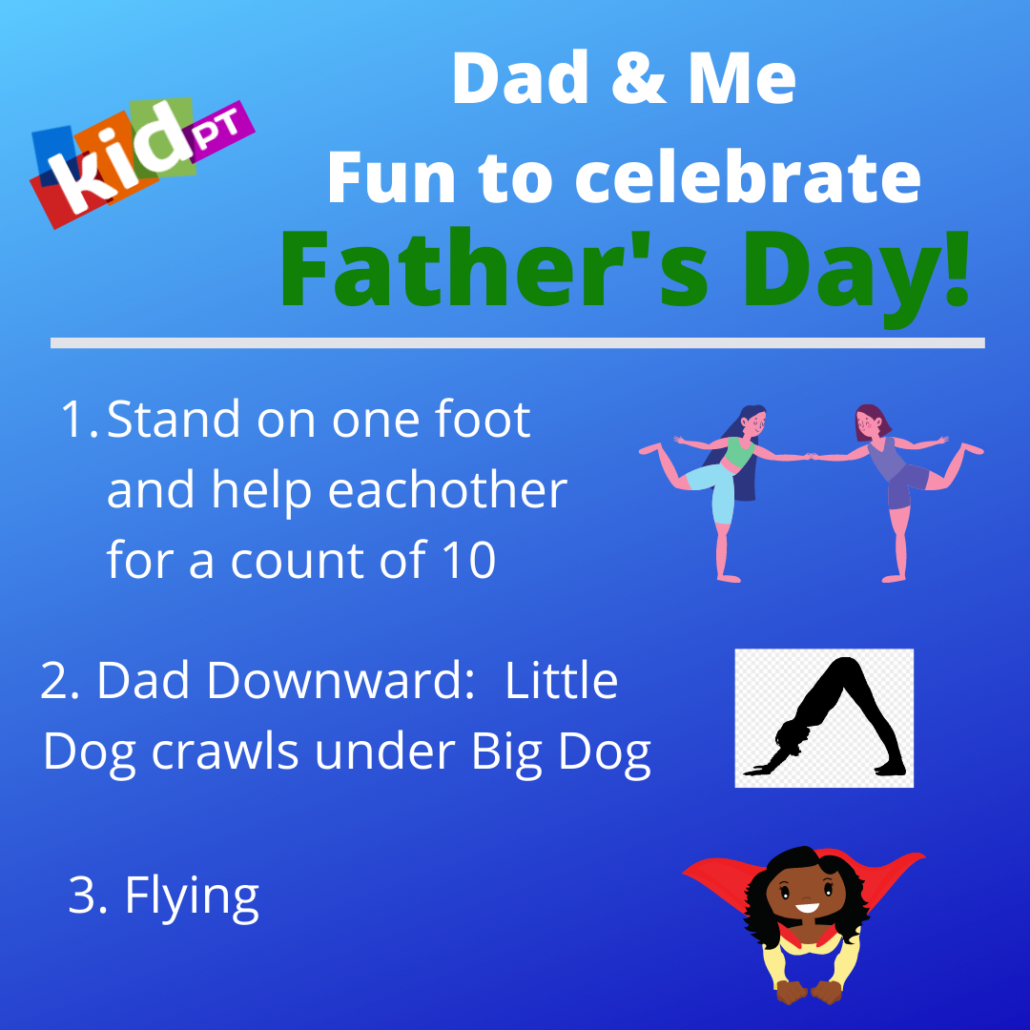
Happy Father’s Day to all of our amazing Kid PT Dads!
Dads know just how to bring a laugh and a giggle to the moment.
Check out these ideas to bring some movement fun to celebrate how much your kiddo loves you on Father’s Day!
First, hold each other’s hands. Can you lift one foot and hold it? Try taking turns closing your eyes and see if you can still both keep your balance. Add in singing a song together like the ABCs and see if you can balance all the way to Z.
Next, have Dad get into the Downward Dog position! How many times can the child crawl under, run around to the start, and climb under again! Let’s really challenge Dad with this one!
Finally, its time to fly! There are many fun ways to do this, from piggyback rides to holding the child and zooming around the house. My favorite way is for Dad to lie on his back his his hands and feet up. Dad puts his feet on the child’s belly, holds the child’s hands, and lifts them up! This is so much fun, just be careful. Be sure there is nothing nearby the child can fall on and only go as high as you can control.
What other movement adventures can you have today?
Did you go on a bike ride together, go on a hike or walk to the park?
Have a Happy Father’s Day!!!
The kids are getting out of school, the weather is getting VERY warm, and many families are looking for things to do! Many people are starting to think about backyard barbecues and other fun, family friendly activities as we picture our summers! Don’t forget to include some gross motor fun into your next backyard barbecue extravaganza. These activities below are sure to keep your kids moving and having a blast!
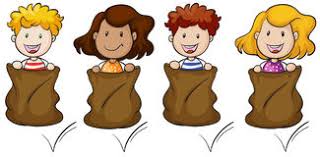
Sack races are so much fun and allow kids to jump, jump, jump to the finish line in a way that engages their competitive side and gets all of their energy going! Jumping with your legs together is a great way to work on coordination and strength while getting a little bit of that extra energy OUT! If you think this would be a fun idea, you can buy sacks for outdoor racing here:
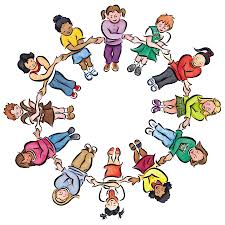
Have all the children stand in a big circle, where they can all see each other! In a movement circle you can play fun games like “Pass the move” where every child does one move and then everyone repeats the move. These moves can be linked together to form a whole mini dance to keep kids moving and grooving in a funky way! In the circle, they can also move along to kids music specifically created for movement, like “Simon Says”, “The Hokey Pokey”, and “Animal Action”. Look for children’s movement songs on YouTube, Spotify, or other music Apps. There is also a whole YouTube channel of children’s movement songs through GoNoodle too, if your child loves silly characters! Here are a few links to some fun ones:
Animal action: https://www.youtube.com/watch?v=30ePPeUbwSs

For this one, have each child choose one item they want to put in their obstacle course (so that no one is touching the same items). Have them make up a specific rule for how to use their part of the obstacle course and have each child explain that rule to their friends. By the end of all the explanations and the building process, they will have created a full obstacle course as a team! This will help them use their creativity and collaboration skills before each of them jumps into action to move through their creation, helping them to work on strength and coordination too!
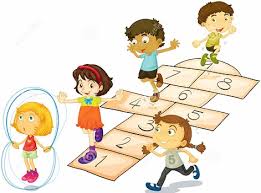
This old classic is great for working on jumping and hopping, and makes kids switch feet on every step, so it is also great for coordination. It can be set up with simple sidewalk chalk on a driveway or blacktop at the park. Jumping between numbers can be made even more fun and tricky if you ask the children to skip certain numbers, say their top ten favorite animals with every jump, or come up with their own wacky pattern for jumping through the squares.
Have fun out there everybody, keep moving, and enjoy the start to your SUMMER! Let us know @Kidpt on Instagram and @KidPTNJ on facebook or by emailing us at info@kidpt.com to tell us how these outdoor games worked out and if you want more fun ideas for how to keep your kids moving this summer!
